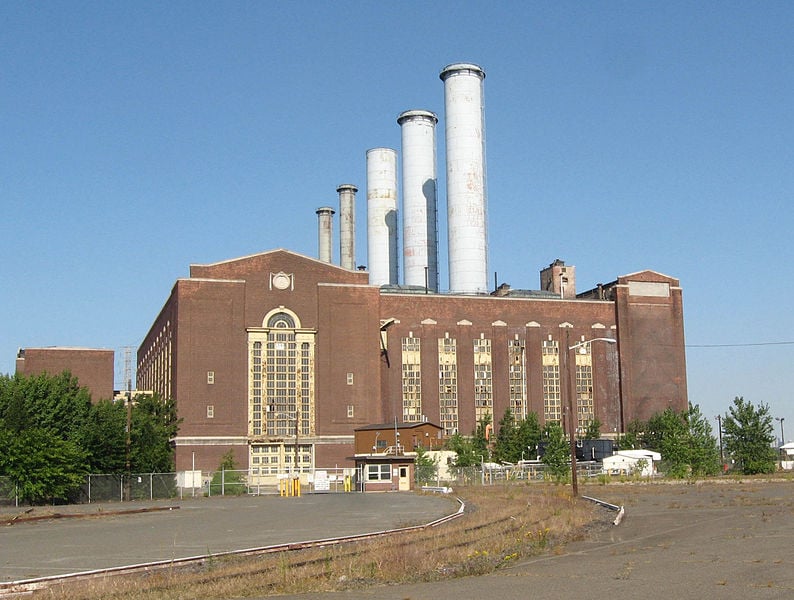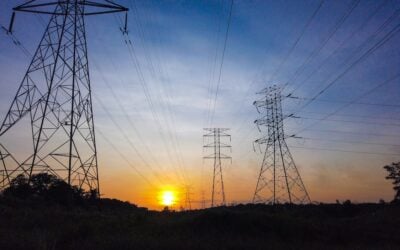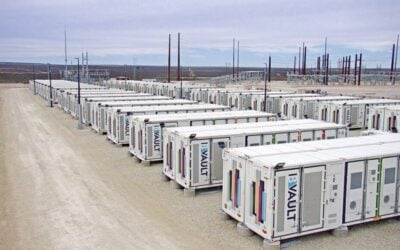
Battery storage has been cited among potential options for reducing the emissions and other environmental impacts created by 461MW of gas-fired peaker plants in New York State.
Public power utility New York Power Authority (NYPA) said yesterday that it has agreed with a coalition of clean energy and environmental justice groups to assess how NYPA can “transition” the peaker plants in its service area to “utilise clean energy technologies”.
According to a joint press release from NYPA and PEAK Coaltion – formed by five groups including New York Lawyers for the Public Interest and the New York City Environmental Justice Group – the available options could include “battery storage and low to zero carbon emission resources and technologies”. As well as lowering greenhouse gas emissions and other pollutants, the transition plan is aimed at improving air quality.
As the name implies, peaker plants come into action to provide power to the grid to meet peak demand. As such, their utilisation may often be during a low percentage of hours in the year, but often tend to be among the most polluting assets on the electrical grid.
Try Premium for just $1
- Full premium access for the first month at only $1
- Converts to an annual rate after 30 days unless cancelled
- Cancel anytime during the trial period
Premium Benefits
- Expert industry analysis and interviews
- Digital access to PV Tech Power journal
- Exclusive event discounts
Or get the full Premium subscription right away
Or continue reading this article for free
NYPA said that in the case of its peaker plants, this is only 10% of the time. In a 2019 interview Tom Buttgenback, CEO of US solar developer 8minute Solar Energy said that the reductions in greenhouse gases (GHGs) are “tremendous,” when peaker plants are replaced with renewables-plus-storage.
“One point that folks often overlook if you look at a gas peaker is what kind of emissions a gas peaker actually produces as you fire them up,” Buttgenback said, in the article: ‘Peak time to take action’.
“We all know the numbers of a combined cycle gas turbine (CCGT) are roughly half of a coal plant in carbon emissions per megawatt-hour, but that’s not true when you fire them up. Gas peakers’ emissions profile is pretty bad. Especially in the ramp-up, they run kind of ‘dirty’ like a cold car engine does until the catalytic converter comes up to temperature.”
Power plant emissions can ‘contribute to worse outcomes for those affected by COVID-19’
“This collaboration will evaluate the technologies needed to move these peaker plants toward low or zero carbon emission technologies,” Eddie Bautista, the New York City Environmental Justice Alliance’s executive director, said.
“The emissions from in-city power plants can exacerbate respiratory diseases, such as asthma, which recently have been shown to contribute to worse outcomes for those affected by COVID-19.”
The NYPA-PEAK Coalition release emphasised that plans to transition NYPA’s six peaker plants in New York City and one on Long Island, which have been in operation since 2001, must maintain the electric system’s reliability and resiliency requirements while helping the state meet its policy goal of achieving zero carbon electricity statewide by 2040.
NYPA said that the agreement with the coalition shows that the utility is committed to piloting low to zero carbon emissions resources and technologies, as well as “investigating the feasibility of short- and long-duration battery storage,” while advocating for an increase in offshore wind and solar generation capacity in New York’s energy mix.
Gil Quinones, NYPA’s president and CEO – and self-proclaimed energy storage “geek” and enthusiast – said his organisation has “committed to being a first-mover, exploring new clean energy frontiers, so that we, together with our partners and along with other utilities, can demonstrate a direct path to a cleaner environment for all New Yorkers”.
Under the Memorandum of Understanding (MoU) signed by NYPA-PEAK Coalition, the utility will collaborate with environmental justice groups on investigating the various alternative options while also agreeing to support consultants working independently alongside NYPA and the coalition on the development of clean energy options.





